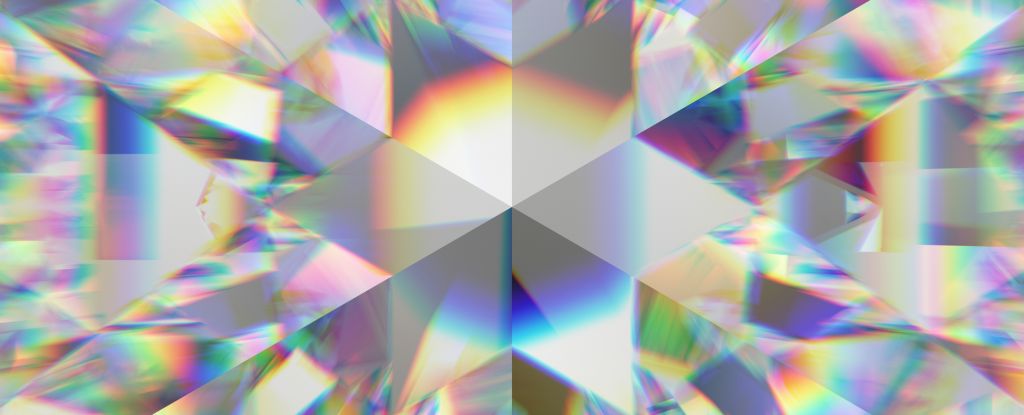Scientists have blown up some atoms like balloons to create an extreme version of an ‘impossible’ state of matter.
By bombarding rubidium atoms with lasers, physicists have forced them into an airy Rydberg state. This experiment resulted in an exotic state of matter known as a time crystal.
According to the team, this opens up a new way to investigate the properties of time crystals, as well as phenomena such as quantum fluctuations, correlation and synchronization – an important factor in the design of quantum computers.
Time crystals were first described in 2012 by American theoretical physicist Frank Wilczek. They are motions of particles that repeat in a time dimension, similar to the way crystals such as diamond and quartz are patterns of particles that repeat in space.
While the original theory described patterns that repeated ‘in perpetuity’, ‘temporary’ versions have been realised experimentally and observed in different ways by different teams of physicists. In these, oscillatory patterns can be measured that differ from external rhythms imposed on the crystal.
This new kind of time crystal is generated from a gas of rubidium atoms at room temperature, confined in a glass container.
A team of physicists led by Xiaoling Wu, Zhuqing Wang and Fan Yang at Tsinghua University in China used laser light to excite the atom into Rydberg states. That’s when energy is added to the atom in such a way that its outer electrons trace larger orbits around the nucleus, effectively pumping the atom up to hundreds of times its normal radius.
That’s still quite small from our point of view, but it has an interesting effect on the way the atoms interact with each other when they’re all together in a glass box.
“If the atoms in our glass container are brought into such Rydberg states and their diameter becomes enormous, then the forces between these atoms also become very large,” explains physicist Thomas Pohl from the Vienna University of Technology.
“And that in turn changes the way they interact with the laser. If you choose laser light in such a way that it can excite two different Rydberg states in each atom simultaneously, then you create a feedback loop that causes spontaneous oscillations between the two atomic states. This in turn also leads to oscillatory light absorption.”
So when the team excited their rubidium gas with laser light, something exciting happened. Even though the laser was at a constant intensity, when they measured the light at the end of the container, they saw signs of atomic oscillation as the atoms flickered back and forth between an excited state and a less excited state.
These oscillations had arisen organically, thus meeting the definition of a time crystal.
“This is actually a static experiment where no specific rhythm is imposed on the system,” says Pohl. “The interactions between light and atoms are always the same, the laser beam has a constant intensity. But surprisingly, it turns out that the intensity arriving at the other side of the glass cell starts to oscillate in very regular patterns.”
This has potential applications in technology that requires highly regular, self-sustaining oscillations. Metrology, for example – the science of measuring – could make use of such a system. And quantum information processing based on Rydberg atoms would be a powerful tool for computing.
“We have created a new system here that provides a powerful platform to deepen our understanding of the time crystal phenomenon in a way that comes very close to Frank Wilczek’s original idea,” Pohl said.
The research was published in Physics.
